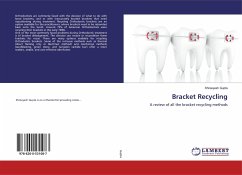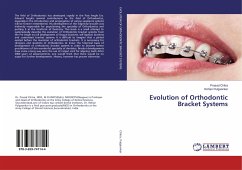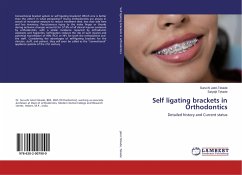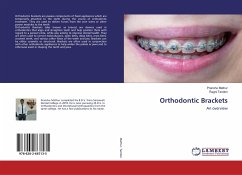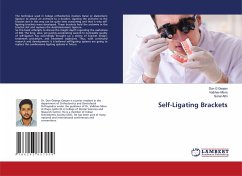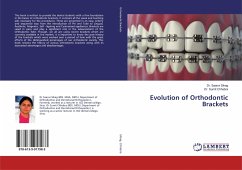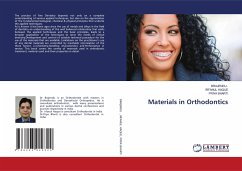
DIFFERENT BRACKET SYSTEMS IN ORTHODONTICS
Orthodontic bracket systems
Versandkostenfrei!
Versandfertig in 6-10 Tagen
40,99 €
inkl. MwSt.

PAYBACK Punkte
20 °P sammeln!
Orthodontic brackets bonded to enamel provide the means to transfer the force applied by the activated archwire to the tooth. Before Angle began his search for new materials, orthodontic attachments were made from noble metals and their alloys. With the origin of newer techniques, various bracket modifications will be introduced to meet the specific technique requirements. But the basic design and function will remain the same. Changes in size, shape and material only serve to diversify the area of use. All said and done brackets old or new, complex or simple, original or modified still remain...
Orthodontic brackets bonded to enamel provide the means to transfer the force applied by the activated archwire to the tooth. Before Angle began his search for new materials, orthodontic attachments were made from noble metals and their alloys. With the origin of newer techniques, various bracket modifications will be introduced to meet the specific technique requirements. But the basic design and function will remain the same. Changes in size, shape and material only serve to diversify the area of use. All said and done brackets old or new, complex or simple, original or modified still remains the most convenient and efficient means for transmitting orthodontic forces to the teeth and thus bringing about their desired movement. Research works on orthodontic bracket materials has led to the use of advanced manufacturing methods like injection molding, improved bracket base designs for retention purposes, use of titanium alloys in bracket manufacturing and coating conventional metal brackets with noble metals to reduce corrosion and hypersensitivity reactions.



